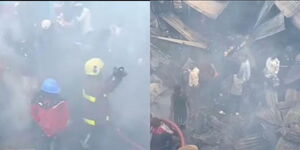Underground power cable usage has been on the rise globally, with most countries in Europe and America preferring them to overhead power lines.
Despite the rising popularity in other countries, Kenya Power has not transitioned preferring to use overhead power lines except for a few areas in Nairobi.
Electrical Engineer James Ogutu speaking exclusively to Kenyans.co.ke revealed why Kenya had yet to transition to an underground cabling system.
“Most countries in the West prefer underground cables because they are less affected by weather and environmental conditions making them more reliable.
“Kenya though has different challenges than the West making overhead power lines more preferable,” he explained.
Mapping
According to Ogutu, it is easier to use underground cabling in developed countries because there is proper mapping.
“In Europe and the United States, there is proper mapping of infrastructure, when installing the underground cables, you know exactly where the water and gas lines are passing.
“In case there is any work to be done, there are proper maps to guide on where the cables should be laid,” he explained.
Ogutu notes that this is not the case with Kenya and hence technicians cannot know how to safely install the underground cables.
“There are areas where we have underground cabling like in Upper Hill, Nairobi but the challenge is when we have road construction undergoing and there are no proper maps to guide the contractors.
“You will find contractors now interacting with high voltage cables underground which is very hazardous,” he explains why Kenya Power does not prefer underground cables.
Safety Measures
Engineer Ogutu explains that safety measures when installing underground cables are higher.
“This is because there is a certain depth you must lay the cables and advanced insulation,” he expounds.
This drives the initial cost higher according to Ogutu which makes Kenya Power not consider underground cabling when doing electricity connections.
“You also have to warn people before doing the cabling according to demarcation standards and in some cases incur compensation costs,” Ogutu explains.
“The costs of ducting, trenching and marking make the cost higher than if you had opted to do overhead,” he adds.
Maintenance
Ogutu explained that maintenance for overhead power lines is easier compared to underground cables.
“For overhead, if you want to replace a line, you only need to climb those high masts and replace it.
“Now for underground, you may need excavation or you do dedicated ducts which are very expensive,” he explains.












